#if only Dracula was more seductive than evil...
Explore tagged Tumblr posts
Text
My Dear Lady,
I write on the behalf of Mr. Jonathan Harker.
He has fallen ill and though his health improves, I cannot permit him to leave my care. However, he begs for your presence at his side. He is with me at Carfax Abbey in Essex. Come past 10 to-night if you wish to see him. You may remain as my guest to be with him for as long as you wish.
Your obedient servant,
Count Vlad Dracula
(Read More on AO3)
#v writes#Dracula#Mina Murray Harker#Jonathan Harker#Count Dracula#Jonathan x Mina#Dracula x Jonathan Harker#Dracula x Mina#Dracula x Jonathan x Mina#polyshipping#Battleship exchange#if only Dracula was more seductive than evil...
19 notes
·
View notes
Text
I'm So Evil, And Skanky, And I Think I'm Kinda Gay (Bad Girls)
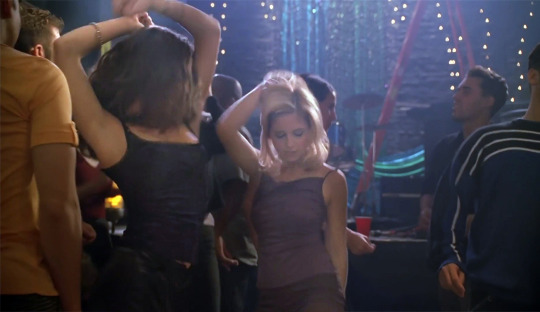
In 1872, a full twenty-five years before the release of Bram Stoker’s Dracula, Irish author Sheridan Le Fanu published Carmilla. This story depicts the relationship between the young and innocent protagonist, Laura, and the confident and mysterious title character, Carmilla. A friendship blossoms between Carmilla and Laura and the two become close, but over time Laura becomes suspicious of Carmilla’s strange behaviour. She flees from her, and it is revealed that Carmilla is a vampire who has been preying on Laura – feeding on her nightly and attempting to turn her into a creature of darkness. Carmilla is confronted, killed, has her head removed and body burned, and the ashes of both are thrown into the river.
A simple story and much shorter than a true novel, Carmilla’s historical impact outweighs its length. Not only is it one of the earliest and most notable pieces of vampire fiction, and a great influence on Dracula itself, it is also the origin point of one of the most controversial tropes in this genre of fiction: the Lesbian Vampire.
The vampire myth as constructed by Dracula and its compatriots positions vampires as a corrupting sexual influence upon women. Older men sneak into the bedrooms of virginal young women, penetrate them, and therefore transform them into something tragic and ungodly. They personify a threat to patriarchy; a threat perceived in the form of female sexuality. The idea is that an unmarried woman having symbolic sex will irrevocably twist them into some kind of monster.
The Lesbian Vampire exists as an extension of this idea, focusing on one of the most diabolical threats to patriarchal ideology – a woman who sexually desires another woman. Carmilla’s victims are exclusively female, and her pursuit of Laura is very visibly romantic in nature. She kisses Laura, confesses love for her, the two take walks in the moonlight and embrace each other. This is what leads to Carmilla feeding upon Laura and threatening her death. Symbolically, there is no separation between the two. The danger Laura is in is caused by same-sex desire. Carmilla’s villainy is her lesbianism. The trope does not have to include vampires in a strict sense, but more generally the link of sapphic seduction leading to corruption.
Read More
#btvs#buffy the vampire slayer#btvs meta#meta#essay#insect reflection#faith lehane#s3#bad girls#theme: queerness
232 notes
·
View notes
Text
Well. I just read the Robert Eggers Nosferatu (2024) script in its nascent 2016 form. Quick and haunted thanks to @nosferattusx2 for making me aware of its existence. It’s here on the Internet Archive if you want to give it a look yourselves.
I don’t know if it’s legit, but it seems precariously close to the trailers. Even if it is the real thing, it’s also an eight-year-old rendition of the script, so there’s no guarantee of it being an exact mirror of what will hit theaters. That being said?
It’s. A lot.
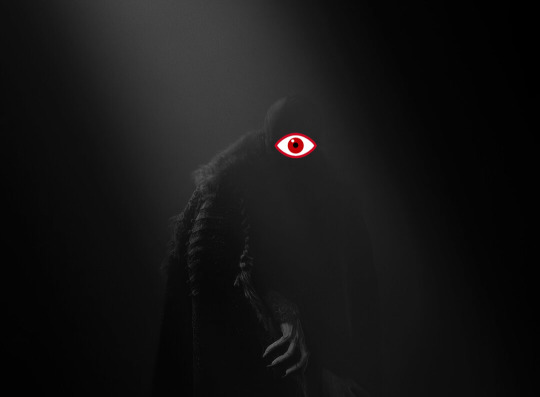
SPOILERS BELOW
I won’t regurgitate the whole thing here, just the main bits that stood out to me for better or worse:
For a guy who says he's very against the sexy romantic vampire trope, Eggers makes sure to have everyone getting scared and horny over Orlok at every opportunity. I will give him grudging kudos for not confining this strictly to Ellen or otherwise Just the Ladies~. The thing opens on Knock stroking himself to the concept of the guy and Thomas gets his own erotic/assault-flavored attack from Orlok at the castle with future allusions framing it in a distinctly sexual framework. Ellen is set up as the ~darkly tempted Eve to Orlok’s Adam~ but it’s not aggressively mega-hetero about it. Progress?
Thomas arrives in Orlok territory and immediately gets swarmed and pickpocketed by smelly-masculine Romani people (referred to strictly by the g word through the script) bar the one pretty young teenage girl one who we later get to see riding naked on a horse because only naked virgin girls can lead the group to hidden vampires for their destruction. Yeah.
…
Bobby Egg, I can get behind the VVitch using seductive evil weirdness and I see why mermaids would swim around topless, but. What the fuck? And also follow-up what the fuckery to the whole portrayal of these guys, period? On that note.
Here we see the first example of Thomas being Assigned Twink at Comparison to All the Other Men. Eggers frames him as insecure beside the masculine Romani and has a future character refer to him as a ‘dandy’ (despite that being a term reserved for men who were well-off, not just effeminate/less than manfully manful). To Bobby Egg’s slight credit, Thomas is not portrayed negatively or milksop-shaped because of this; it’s just. Kind of there. All the time.
Count Orlok’s description isn’t bad. Very ominous, very classic gothic-supernatural. I do appreciate that he’s explicitly given more corpse-like attributes, making him seem like a mobile cadaver more than anything else. And Eggers does keep him creepy—no stealthy Count Fuckula spit-shining on him.
Shovel scene sort of happens as an original Dracula nod, but with no payoff. An attempt was made and thrown away.
Ellen. Oh, Ellen. Such a double-edged piece of work here. On the one hand, this version of the script implies that she isn’t doing the classic bastardized Mina thing of deciding her lame lameo human husband isn’t good enough for her and she needs herself a REAL MAN. There’s a lot of the original Thomas and Ellen’s genuine love and regard shown in the couple…
…up to a point. Eggers writes them a very very ugly and basically wholly OOC argument to do with Thomas claiming he wed her out of pity and saying she ought to have been sent to a madhouse when she was young, which itself was a follow-up to Ellen yelling that Orlok’s work is all his fault in a weirdly victim-blamey way and a scene that felt less like a badly done seduction and more like she was trying to actually assault him. They seemingly both reconcile after this, but like…what the entire hell?
Okay, to get this out of the way—I think Eggers is trying to lean hard into the ‘well in the actual time and place of the story things would be so grimdark and depressing, so it has to be nasty even between the loving main couple, and it adds to the horror-misery of it all, and it makes Ellen’s dark temptation~ more reasonable!’ thing. We can see a lot of that in how he sets Ellen up to have a history of dark thoughts, a lot of stigma surrounding her sanity/insanity, and there’s some very cruel medical ‘treatment’ she gets subjected to during her fits while waiting for Thomas and/or Orlok to arrive. Naturally those fits are all sexual/orgasmically twitchy because of course. Eggers is very much trying to set Ellen up as sympathetic in her situation and as a kind of next evolution to the Francisified Mina character who wants to fuck Dracula/Orlok/Death so so bad~
And then we get to the Van Helsing stand-in, Von Franz, and he is…oh man. 90% of his bits are fun. Interesting. The last 10% would make Abraham van Helsing in every iteration punch through the fourth wall and beat him to death with their library books. Surprise, Von Franz and Ellen both secretly colluded to set up the sunrise trap that will inevitably kill Ellen via Orlok feeding on her into the dawn. Von Franz purposefully leads the vampire hunter crew astray, including Thomas. When Thomas discovers this—from Knock who he mistakenly staked in Orlok’s place due to a mix-up with the coffin—Von Franz laughs as Thomas and Dr. Sievers the pseudo-Jack Seward make a run back to the house to try and save her.
The climax comes with Ellen and Orlok playing out the original Nosferatu ending. She dies happily cradling Orlok’s carcass. Thomas reaches her bedside and collapses in despair. The script closes on Von Franz showing up with a lilac bouquet and putting his hand on Thomas’ shoulder as he grieves, still unmoved from the bedside. Close on Ellen’s dead face ‘at peace.’
Somehow the scene doesn’t end with Thomas wringing Von Franz’ neck.
There’s a lot more to read in there, obviously, but those were just all the big lumps sticking out of it to me.
I will grudgingly say it is not the absolute worst-case scenario I was afraid of. It’s not what I was hoping for—but that is keeping in line with Dracula and Nosferatu-adjacent media, per tradition. I do still want to see the film, I do want to like the finished product, even with the worrisome second trailer and sundry interviews throwing up red flags. Like The Last Voyage of the Demeter, it is at least an earnest attempt at taking this vein of classic gothic vampire horror seriously as a horror story.
But also.
I would really like directors to stop turning the Mina-Ellen figure into the vampire-pining gothic blowup doll for the latest ‘Bold and Subversive’ take #1654237 of GIRL AND THE DRACULA DO KISSY SEXY ROMANCE TIMES. An impossible dream, I guess.
#I want it to be good#I so badly want it to be good#but this is setting me up to expect a stale gas station candy bar when I asked for a chocolate cake#which is still sadly better than the endless stream of chocolate-flavored rat poison I'm used to#but still#long sigh#nosferatu#nosferatu 2024#robert eggers#script#internet archive
33 notes
·
View notes
Text
The Papas, DND and VTM
As some of you know, I am an avid TTRPG liker, watcher, player, etc. The idea of the Papas (and the Ghouls) playing a campaign has always been very fun to me, so I consulted with the council (my wives @bonesy-doodles and @parabunny).
And so, I present to you, the Papas and their set ups for Dungeons and Dragons and Vampire: the Masquerade!
Primo
So, Primo is overall very much the traditional Dracula of the bunch. He's all dark and mysterious and probably actually evil (by some metric), despite the garden tending and the (poisonous) plants he takes care of. He for sure is a roleplay guy but will kick ass in combat.
In DND, he would definitely attempt to play a Dhampir Warlock or Artificer. Artificer especially would allow for alchemy and a lot more fucking around with spellcasting - therefore making it both challenging and engaging and for Primo to pull some insane shit during session. He could also just multiclass Warlock/Artificer, definitely pact of Fiend, Undead, or the Great Old One. The Dhampirism is for vibes, okay. It just fits.
As for VTM, he would be Malkavian or Nosferatu, but the oracle aspect of Malkavian makes it all the more ominous. There is also Hecata and Tzimisce! Either way, he's one of the more ancient, traditional vampires. Primo would play VTM and say, "I am Cain." (bones said this) Much to the chagrin of the Master of Ceremonies.
Primo is also a dice hoarder, he has so many sets and he has a specialized dice bag for it too. It's embroidered.
Secondo
Secondo is very - how you say - wild? He would bring chaos to the table I fear, but he does it in character rather than like being a frustrating player. While he does read the rules well, he does it to get around them I feel.
In DND, he'd play a fighter class, probably just straight up Fighter or Barbarian. And he'd play bigger species like Dragonborn and Orcs! So basically the tank and also main hitter. But for a little bit of religious aspects, an Oathbreaker Paladin would be perfect for him. It has those angsty, turned back on my god vibes as well as the tankiness of melee classes. a Barbarian Paladin multiclass would hit hard methinks.
VTM wise, he'd definitely be Ravnos. I considered Toreador and Gangrel, but I think Ravnos fits the best. He loves (un)living on the edge and rather than the high art vibes that Toreador embody, it's a lot more, well, wild! And also cool. Very rogue-ish and plays by his own rules.
I think he likes fun dice that are like, metal specifically. Some of them are more dark, gothic designs and then some of them are just super fun.
Terzo
Alright, this guy for sure is a roleplay-heavy player. Yeah combat is fun and all but only to get shit done. He loves taking his time curating his character's aesthetics and their motivations and all. He will stick to the bit, do not try him.
That being said, of course he's playing a Bard in DND. He would play either a Tiefling or something of the Elf variety. College of Eloquence would be what I'd assign to him. The bardiest bard to bard, you know? However!! He could also play a Warforged, specifically one with Art Deco elements and that could also reference Frankenstein. It always comes back to Frankenstein with him.
To riff off of the artistry of bards - Terzo would be a Toreador. They're known for being artisans. They're beautiful and charming, seductive...all of which fits the bill for the type of character Terzo likes to play. On the other hand, he could very well play a Brujah. They're known as rebels, warrior-scholars. Terzo would play a vampire that's very Vampire Chronicle-esque.
He's also pretty superstitious about his dice, like if one of them rolls badly he will retire it.
Copia
I think Copia also enjoys the roleplay aspect of TTRPG's a little more than the combat but he gets super giddy whenever he hits a critical hit or takes someone down.
For DND, he would play a Tiefling Cleric. He's got that vibe that he enjoys both the aesthetics and the idea of Tieflings conceptually! Personally I think he always has a Tiefling PC on hand at all times, like it's just his thing. Other than Cleric, he might also take Druid for Wildshape, so he could turn into a little rat. Otherwise, he might also enjoy Sorcerer (magic nepotism /hj). Who has time to learn spells? Not him!
VTM though, it'd be funny if he played a Lasombra. Definitely hilarious considering their whole social-climbing thing and the administrative aspect! Tangentially, the Ministry Clan would also be kinda ironic. I just think he plays that sort of vampire that is less Ancient but more like What We Do In The Shadows vampire.
He likes having dice for each of his characters, he might reuse some, but he prefers having one set for one PC.
Extra
They all play an Oops! All Tiefling Bard Game, at some point. It is so stupidly fun.
There have been fights over in-game choices. Many of them. It's okay, they get through it.
The Ghouls do play as well! I have not figured out their own preferences yet, but trust, they get to have their TTRPG time.
OC tidbits
My OC, Sibling Nephtys would run games like Monsterhearts (college ver) and Monster of the Week.
Bones's OC, Sibling Rigorian, would run Dungeons and Dragons.
Para's OC, Bunny, would run Vampire: The Masquerade.
#the band ghost#headcanons#unseriously serious#ghost bc#primo#secondo#terzo#copia#papa i#papa ii#papa iii#papa iv#ttrpgs#emeritus brothers#vtm#dnd
23 notes
·
View notes
Text
Top 10 Portrayals of Renfield
The time has come to cover our last supporting player in Bram Stoker’s Dracula. I’m skipping over Arthur Holmwood and Quincey Morris, on account of a lack of really great interpretations for either, which means our next major character of note is Renfield: the deranged lunatic who acts as the Count’s mortal servant.
Renfield is interesting in that, much like Van Helsing, his role has become more pronounced over the years. In fact, Renfield caught on as a major character EARLIER than Van Helsing, as even the very earliest Dracula films included a Renfield character of some sort, and many movies that don’t have ANY of the other characters from the novel rather frequently feature either Renfield or some sort of “Renfield surrogate.” In the book, however, the madman is actually a relatively peripheral character: he doesn’t really DO a whole lot, in the grand scheme of things, but rather acts as a sort of “warning siren.” Renfield’s psychic connection to Dracula makes him a sort of living bookmark: someone who can track the vampire’s moves throughout the novel, even when the other characters aren’t physically near the Count. He also acts as an interesting counterpoint to Dracula and his Brides: they are powerful, seductive, grandiose figures of evil who represent a sort of decadent “gold standard” of vampirism. Renfield is a disheveled psychotic who scavenges for bugs and other small animals to feed his growing appetite, worshiping Dracula in a cultist-like fashion. He is the bottom-feeding parasite in comparison to the Satanical power Dracula seems to exude. Over the years, creators have built up Renfield’s character in a variety of ways, expanding his role in the story and giving him more depth and focus. It makes sense, when you think about it: if any character is going to be as memorable as the great and powerful King of the Vampires, it’s going to be his scurvy little henchman who eats insects in-between bursts of mad raving. For actors, it’s a great role to sink one’s teeth into (no pun intended), as Renfield allows a performer to go wild in ways other roles can’t provide, and make some interesting choices through. There are lots of vampire familiars to go through, so let’s waste no more time: these are My Top 10 Favorite Portrayals of Renfield!
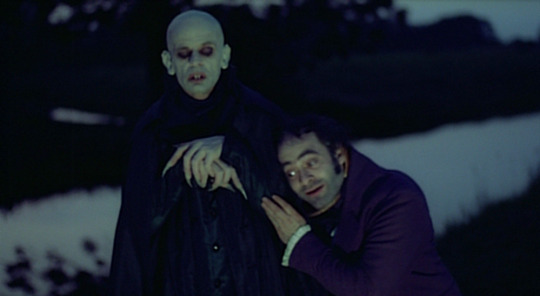
10. Roland Topor, from Nosferatu the Vampyre.
In the first remake of “Nosferatu,” French artist Roland Topor was cast - in a rare acting role - in the role of Renfield. I don’t know much about Topor or any other work he may have done as a performer, beyond this movie, but I will say this, he doesn’t do half bad! His Renfield is delightfully creepy and yet rather funny at the same time. I love the way Dracula just sort of shrugs him off, clearly irritated with his sycophantic servant, in the scenes they share together. My only problem is that Topor’s Renfield just sort of vanishes from the movie after a certain point; we never find out what happened to him by the end of the picture. For all we know, he could still be out there…dun-dun-dunnn…
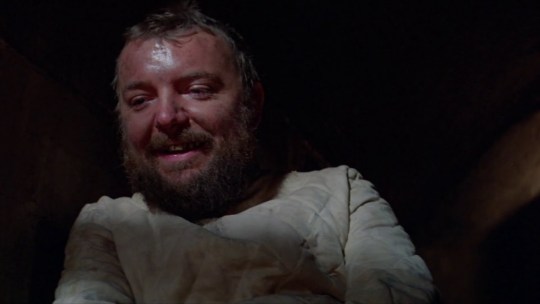
9. Tony Haygarth, from the 1979 Film.
Among other roles, I know Tony Haygarth for voicing a rather depraved version of the Mad Hatter, in the movie “Dreamchild” (which came out six years after the Frank Langella picture). I don’t know who decided to cast this man as two of literature’s most famous maniacs, but I’m glad it happened. In the film, Renfield first appears as a dockyard worker, who has a grudge against the Jonathan Harker and his family for past injustices. This makes him all the more fitting a stooge for Dracula. As the film goes on, Renfield grows increasingly insane, visibly changing from a relatively rational human to a broken mess before his final destruction.

8. Pablo Alvarez Rubio, from “Spanish Dracula.”
Much like its English-language counterpart, the Spanish version of Universal’s acclaimed 1931 “Dracula” conflates the characters of Renfield and Jonathan Harker: Jonathan still appears, but it’s Renfield who visits Castle Dracula, and then returns to England with the Count aboard a doomed ship. This works as a sort of origin story for the character, which several other versions have taken influence from. Rubio may not be as iconic as Dwight Frye’s scene-stealing Renfield, but he’s not a bad interpretation, either. However, I think the Spanish version makes some choices in edits that ultimately hinder his performance, and bring it down in the ranks.
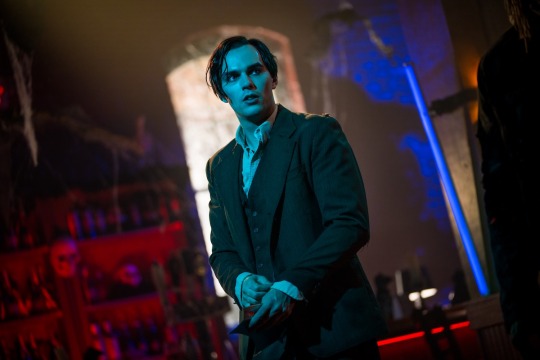
7. Nicholas Hoult, from Renfield.
In this movie, the partnership between Dracula and Renfield is hamfistedly examined as a study in toxic relationships. More of a dark superhero film than a proper Gothic Horror outing, Hoult’s Renfield eats bugs not out of an urge to consume life, but because munching on insects and arachnids gives him superhuman abilities for brief periods of time. While not by any means the definitive version of the character, he is fun to watch and Hoult turns in a spectacular performance.

6. Samuel Barnett, from Penny Dreadful.
In Season 3 of Penny Dreadful, Renfield goes beyond simply being a vampire’s familiar to slowly being transformed into a vampire proper. He starts off as a seemingly mild-mannered, proper Victorian gentleman…but when Dracula learns of some dark secrets in Renfield’s life, he uses that to his advantage and snatches Renfield up to act as a spy against his enemy. Barnett’s Renfield is deliciously creepy, mercurial, and runs the gamut from somewhat sympathetic to utterly detestable. He was easily one of my favorite parts of Season 3.
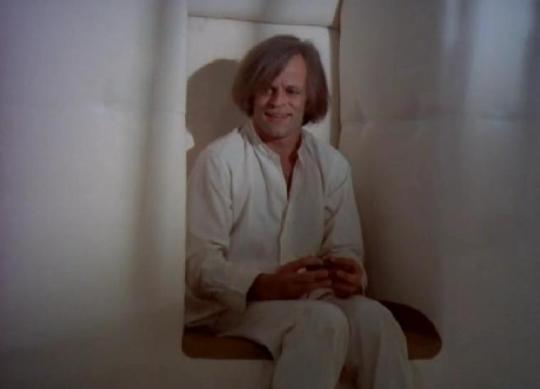
5. Klaus Kinski, from the 1970 Film.
In this Jess-Franco-directed adaptation, Klaus Kinski - who might be the only actor to play Renfield who was probably insane in real-life (seriously, Kinski was…QUITE the piece of work, as a person, behind the scenes) - plays a mute Renfield. While he never speaks a word, and does relatively little throughout the film, he steals every scene he’s in, and is given a more sympathetic portrayal; this Renfield often seems more like a scared, confused child than anything else, and has a tragic backstory behind his madness. At the same time, he’s still dangerous, even trying to strangle Mina while under Dracula’s command at one point. Apparently, Kinski had no idea he was even in a Dracula movie during the making of the film, which seems a bit far-fetched to me…but if it is true, I guess there were worse ways to handle it than just giving this utterly demented individual free reign to just…do whatever the heck he wanted for a while. :P
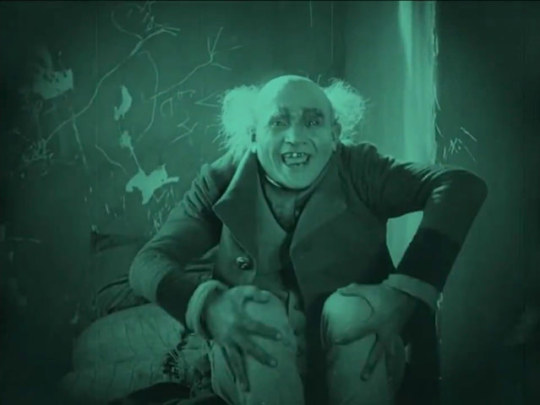
4. Alexander Granach, from Nosferatu.
Referred to as “Knock” in this version, Renfield is given a role that is in some ways expanded upon from the novel, and yet also somehow still very peripheral. He’s in a lot of the movie, but much of what he does is totally separate from the main plot of the film. At the start of the movie, the character is already clearly on an uneven keel, and is indicated to already be working for Count Orlok (Dracula): the Harker character is actually his employee, and Knock sends him out fully knowing what horrors await him. As the movie goes on, Knock goes increasingly more insane, desperate to find and reconnect with his Master. While delightfully over-the-top, there are actually a few legitimately creepy moments with the character too: at one point, he gets hit in the head with two stones, thrown by angry villagers, and…just…doesn’t even REACT to them. I don’t know why, but that particular moment always unnerves me when I watch it.

3. Tom Waits, from the 1992 Film.
While Tom Waits is no stranger to acting, it was still surprising to see him pop up in this star-studded adaptation of the Bram Stoker novel, directed by Francis Ford Coppola. This version seems to take some subtle cues from the Universal films of 1931, as its indicated Renfield preceded Jonathan in doing deals with the Count, and returned to England a changed (and deranged) man. While his role is, once again, relatively set to sidelines, Waits is memorable every time he shows up, ranging from a relatively reasonable-sounding gentleman to a raving, bloodthirsty psycho at the drop of a hat.
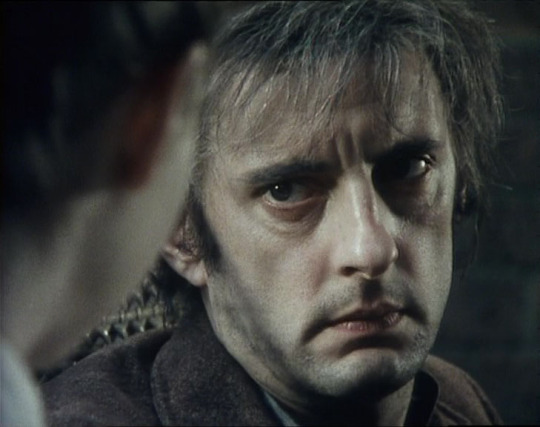
2. Jack Shepherd, from the 1977 BBC TV Film.
While this television production mostly sticks to the novel, one of the more noteworthy deviations it takes is with Shepherd’s portrayal of Renfield. In this version, slightly more focus is given to Renfield’s relationship with Mina, and the character actually goes through a sort of redemption arc. At the start of the story, he is Dracula’s bloodthirsty slave; more like a sort of two-legged dog than a human being. As the story goes on, instead of going more crazy, Renfield begins to regain his sanity and morality. Instead of helping Dracula and being slain by the Count as a way for the vampire to cover his tracks, Shepherd’s Renfield stands up to his Master in the end, effectively sacrificing himself to try and help the other characters. Eat your heart out, Nicholas Hoult: the BBC got there a lot sooner, and STILL made him crazy. XD
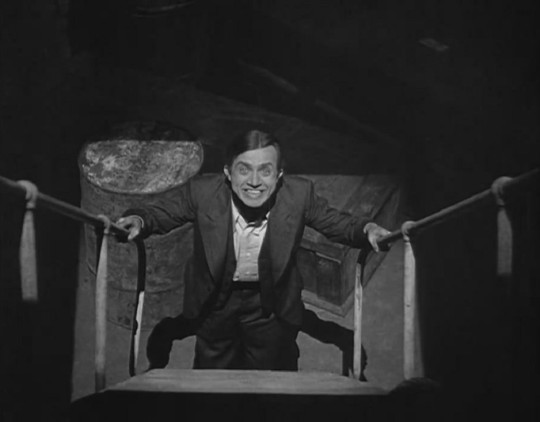
1. Dwight Frye, from the 1931 Film.
For me, just as it’s next to impossible to separate Bela Lugosi (and Christopher Lee) from Dracula, it’s impossible to separate Dwight Frye from Renfield. In some ways, I actually think his performance is the best in the entire movie, trumping even the work of Lugosi and Edward Van Sloan as Van Helsing! Frye’s Renfield is legitimately scary, even by today’s standards, but is also a very sympathetic and tragic character (and at times genuinely funny, too). You really feel sorry for Renfield: an initially innocent man driven mad by Dracula’s corruption, who has to struggle between his loyalty to his Master and his desire to keep his soul clean of guilt. Frye maneuvers through all of Renfield’s moods and modes, from sane and gentlemanly to absolutely freaking off his rocker, with great aplomb. Without a shadow of a doubt, he is My Favorite Renfield.
14 notes
·
View notes
Note
i really have to lament that the standards for female characters in media are still so abysmal that people are happy to eat up #girlboss'd maria and annette in nocturne
when their character bios dropped these past few days, my mind immediately went to this iconic kate beaton comic panel:
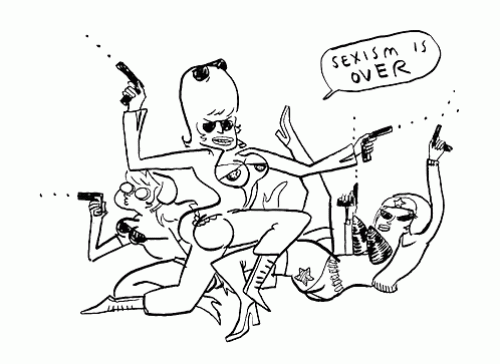
and this was a parody of how mainstream media "solved" sexism by invariably making every female character a badass, take no prisoners Action Girl™ (aka the proto-#girlboss) from over a decade ago
Absolutely incredible :^)
What grinds my gears is that the adaptation is deliberately flattening characters who were distinct in the original games and could have been fleshed out in a proper story.
Annette doesn't do much in RoB, true. Her one significant scene is the one where she threatens to slit her own throat rather than join Dracula. Sure, why not expand on that? An average woman without powers or training, but armed with nothing bur bravery in the face of corruption: she may not be able to strike enemies physically, but she won't fall for their mind games, and she might also be rewritten to be intelligent and tactic-- nope she's a metalbender now!!!! she's also a swordswoman!!!!! and she will be politically motivated!!!!!!
Maria is a plucky 12 yo girl without much experience of the world, but who grows to care about Richter and wants to help her. She doesn't understand, nor care, about Dracula's speech about the evil of mankind, while the adult Richter falters: she is pure innocence. Still, her unique powers give her an edge when it comes to demon slaying, all without losing her upbeat attit-- nope she's a political leader now!!!! she's also a swordswoman!!!!!! and she's always serious!!!!!! and she will be politically motivated!!!!!!!
In the original NFCV, Sypha was the only one spared because her personality admittedly was a little more upbeat and warmer, even though she also fell in the trap of being the One Braincell Of The Group. But Greta and the woman St. Germain simped for picked up the slack for her, as they were both the exact shade of competent, no-nonsense tough lady fighter, complete with "good thing I'm here to run your life now" in the former's case.
And the female villains? Striga was the only original one, being the obvious muscle of the group, but she might as well have been a henchwoman. Carmilla? A self-proclaimed queen whose personality begins and ends at #girlboss, all sexy and seductive and manipulative and with a dash of radfem. Lenore? Not quite as girlbossish, but still meant to be seen as cool and sexy (and fucking how) and a great manipulator. Erszbet? So far she looks like Carmilla 2.0. Drolta is the one we know the least about so far, but it's interesting how she was turned from an old human witch to a young sexy vampire.
You see the pattern here?
Annette and Maria are also the latest examples of characters who have been changed for no good reason in an attempt to "fix" them. NFCV hates normal people, they all have to be heroes and magic users and proficient weapon users. Instead of keeping Annette with her role of "Richter's girlfriend and a normal girl", but giving her a more substantial personality, she was completely reworked to be something that she simply isn't, and that rewriting is being praised as being So Much Better Than The Games. As if her original role is so undefensible that she needs to be reworked from scratch.
It's lazy. There is a sore lack of variety in the female cast of these shows. And it pretends to be "progressive" about it. As if women are only worth being celebrated if they're physically active and have a tough attitude.
Meanwhile, I will forever be impressed by how Ayami Kojima and Kou Sasakura took Rosaly, a literal non-entity in CoD whose only narrative purpose was to be the fridged woman, and gave her enough personality, without straying far from the archetype of the kind normal girl, that I seriously grew attached to her, something I would have never expected at first.
22 notes
·
View notes
Text
The ending of Dracula SUCKS because it’s both laughably anticlimactic and the peak of the novel’s racism. The biggest plot twist of Dracula is that Dracula is not a good book.
In the climax, because Dracula is asleep(tm) in his coffin, Stoker decides he has to throw in some mini bosses for the gang to fight instead— Dracula’s carriage drivers, a bunch of Romani people.
It’s one of the many areas where Stoker makes the racist subtext explicit text?
We get a “climax” where the heavily armed white heroes violently attack this caravan of sorta-armed Romani people and it’s framed as noble and heroic. (we’re supposed to Assume the driver are inherently guilty/okay to attack because they’re Romani, and other Romani people were helping Dracula in the castle chapters, and we all know Those People can’t be trusted!! etc etc) It's nearly “B*rth of a Nation” level racism.
Also not to roast Quincey— but I do love how this squad of white people armed with GUNS could barely defeat this ragtag little group of barely-armed carriage drivers, and even lost one of their members trying to do it. Stoker’s trying to frame them as noble underdogs but they come across as overpowered hyper-violent incompetent idiots who couldn’t manage a clean attack even when everything was on their side. XD
The entire novel is essentially a fantasy version of “B*rth of a Nation”-style tropes? It’s “the evil foreign race preying on our innocent white woman.” This is made extremely explicit in the scene when Mina compares her predicament to the predicaments of women in war zones who are killed by their husbands in order to prevent the foreign enemy from having sex with them. In the narrative, murdering your wife like this is framed as Good. Mina believes she should be killed like this before a Foreign Man Takes her in order to preserve her purity, and the narrative agrees with her. She is a “good English woman” because she believes she’s better dead than corrupted by a foreigner, and if she is corrupted by the foreigner her soul will be damned forever.
After all, the foreigners are evil! Either your wife is a Mina, a Good Wife who is assaulted by the poor evil foreigner, and whose purity can only be regained if you violently take revenge. … or your wife is a Lucie, a Misled Child who says she’s happy now but it’s because Her Mind isn’t Her Own Anymore and shes going to hell and she’s so poisoned by the foreigner that she needs to be put down like a rabid dog to protect the white English race.
I’ve seen people make comments about how bad it is that adaptations tend to make Dracula somewhat genuinely seductive/lovable to Mina compared to the book, which baffles me? It frustrates me that a lot of analysis is treating Dracula like a real person, rather than a character who was written in a specific way for a specific reason.
Yes it is bad that Dracula-the-person sexually assaults the other characters. But the reason Dracula-the-Character is written that way is because Stoker is writing him as a metaphor for Evil Foreign Races Preying on Our White Women. The reason book- Dracula is written so unsympathetically isn’t because Stoker is making a progressive point about sexual assault, but because he’s using Dracula as a deeply regressive symbol of the evil Foreigners having sex with white women who must be exterminated to preserve the purity of white English children.
Honestly I feel like the reason most adaptations make the Count genuinely alluring/seductive/sympathetic is because there’s really…not much to his character in the original novel, outside of being the archetypal Evil Foreigner who is Evil because Foreign, which is both offensive and also really shallow/uninteresting. Later adaptations are more interested with portraying Dracula as more tragic or sympathetic or at least more genuinely seductive because...well at least that's SOMETHING to add to this nothing character.
There’s a lot of potential in some of the concepts and aesthetics and plot points of Dracula, but most of the “deeper thematic elements” of the book are bigoted, shallow, or both.
It makes sense that adaptations have decided to attempt to give the characters depth, nuance, and interest that they didn’t have in the original novel? Or to take the aesthetics but flat-out reject all of Stoker's takes and argue with him about every single thematic element? and I am completely on board with vampire reimaginings that continuing to spit on Bram Stoker’s legacy. I hope people continue to make him roll in his grave. XD.
And again, I'm kinda surprised there were so many people during the Dracula Daily readalong acting as if the book portraying Dracula as purely evil is somehow more progressive than later adaptations portraying him as tragically sympathetic or seductive, when "questioning why the author chose to write Dracula as the monster" is kinda like "baby's first Dracula criticism." I mean that, in even in Hotel Transylvania (the recent kid's cartoon) part of the central plot is that Dracula's family is hunted down because bigoted people assume vampires are monstrous predators incapable of love. And it's not because Hotel Transylvania is a deep challenging movie, but because "let's question Why we've decided to invent this entire class of foreign predatory monsters it's okay to kill without remorse" is such a normal milquetoast uncontroversial mainstream critique of Dracula that you'll even find it in Adam Sandler children's movies. XD.
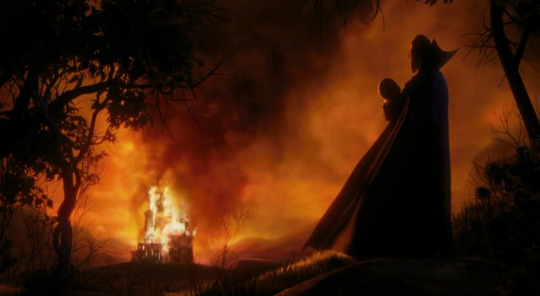
#the virgin Dracula vs the Chad hotel transylvania#(i haven't watched this movie since i was like...12? 13?)#but yeah anyway#this got lost in my drafts for a bit but im Poasting it now#XD#i know dracula daily is Over but still#thats why im posting my Anti stuff now XD#the main thing I learned reading the end of Dracula is that...yeah dracula just isnt a good book#like the chapters in Dracula's castle and the chapters about the ship are great#but despite those interesting self-contained episodes...#the novel itself is pretty weak
64 notes
·
View notes
Text
As Halloween approaches, many people are preparing for spooky festivities by stocking up on fake blood, ghostly decorations and creepy costumes. Among these frightening figures are two iconic creatures that often get lumped together: vampires and demons.
While these beings are both associated with the paranormal and are thought to have similar abilities and characteristics, there is one significant difference between them - their diet. Vampires are notorious for their craving for blood, while demons are often depicted as consuming souls or causing chaos and discord in the mortal world.
This difference in appetite may explain why there are countless recipes and cocktail ideas for vampires, while demons seem to get left out of the culinary world. After all, who wants to cook up a dish for a being that is often associated with evil and destruction?
But there are a few reasons why vampires are more popular when it comes to monster-themed recipes.
One reason may be the romanticized image of vampires in popular culture. From Dracula to Twilight, vampires have been portrayed as suave, seductive beings with a tragic backstory. This romanticized image has resulted in a fascination with these creatures and has made them more marketable than their demonic counterparts.
In contrast, demons have long been associated with fear and horror. They are often depicted as monstrous and evil, making them less appealing for recipe creators and consumers alike. Plus, many people may simply not want to associate their food with something so terrifying.
Another factor could be the novelty factor. While vampires have been a staple in horror stories and movies for centuries, the concept of demons has only recently gained popularity in mainstream media. This means that there are simply more options and ideas for vampire-themed recipes out there.
But despite the lack of recipes, demons are not entirely forgotten in the culinary world. There are still some creative individuals who have found ways to incorporate demonic themes into their dishes. For example, there are devil's food cakes, fiery hot sauces and devilish dips that play off the idea of demons and their fiery association.
In the end, it all comes down to personal preference. Some may find the idea of cooking and eating vampire-themed dishes appealing, while others may find it too macabre. As for demons, they may just have to settle for their role as the ultimate "spooky" creature without a recipe to call their own.
0 notes
Text
Christopher Lee and the Humour of Dracula
Though Hammer’s Dracula series may not quite be my favourite Dracula films, I think Christopher Lee still ranks as my favourite actual Dracula (and as I may have mentioned before, this is a crowded field).
There are, IMO, three key components to what makes his particular take on the character work.
You’ve got your menacing Dracula:

Your sexy Dracula:
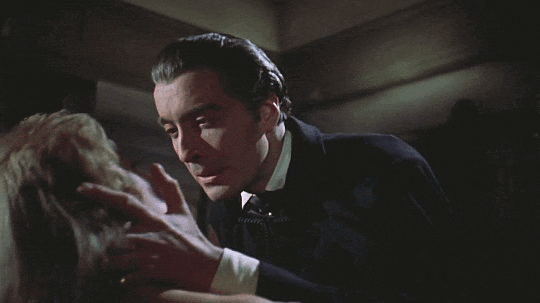
And your oh shit this did not go as planned Dracula:

That last one being the aspect I feel doesn’t really get enough appreciation.
I don’t know how many of the faces Lee pulls are unintentionally hilarious, or just intentionally hilarious, but they’re amazing either way.
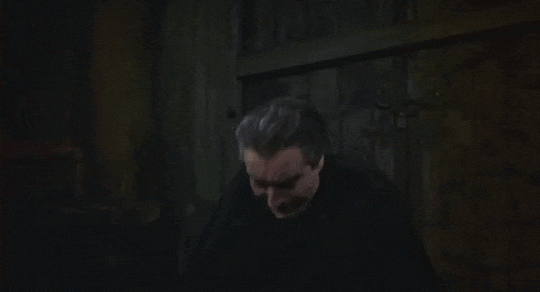
Dracula dies a different way in all 7 of Lee’s Hammer films. Marathon the Hammer Draculas, and you’re going to watch the poor guy make these faces a lot. By the time I’d finished the series, I’d seen him die so many times I’d started kind of rooting for him as the underdog.

None of this is to take away from how genuinely menacing (or sexy) this take on Dracula can be ‒ which might be a little surprising, given this is an interpretation devoid of so much of what made Stoker’s original so threatening to begin with. For all the noise the Hammer’s scripts make about Dracula as “the greatest evil that ever lived,” this is a rare version with no interest in invading England, whose worst acts are inspired by nothing more machiavellian than hunger or revenge. We assume he’s out there in the countryside eating people on the regular, but it’s surprising how little of that we see. This is a rare take where you could make the case Dracula may genuinely have invited Jonathan to his castle for no reason more nefarious than wanting someone to reorganise his library.
I bring all this up not to convince you that Lee’s Dracula is secretly misunderstood (though, you know, by all means write me that fanfic) ‒ this guy is still seriously bad news ‒ but it is just a little embarrassing how many of his actual kills happen only as retaliation, usually after some bastard tried to kill him first (see Dracula Has Risen From The Grave especially) and fucked it up.

He also hardly speaks. So little, in fact, that the supercut of every word he says across his 7 Hammer Dracula films is barely 9 minutes long (and about 3:30 of that is from the last just the last third of The Satanic Rites of Dracula, being the one and only film in which he actually shows some ambition).
Nor does he spend much time even trying to pass for human ‒ a crying shame, IMO, considering how well Lee plays the few later scenes where he gets the chance (see also: why Scars of Dracula is honestly one of my favourite entries, for all its many flaws). A Dracula who can lull you into a false sense of security has a whole other kind of menace.
The point here is that Lee’s really not given that much to work with. Bloodshot eyes, pointed fangs and cherry-red Kensington gore will only get you so far. Add in the fact that he has to put up with the indignity of looking very silly and being killed in some gloriously ridiculous ways, and keeping the menace going must be something of a job.
But for what he’s given, somehow Lee still pulls it all off.
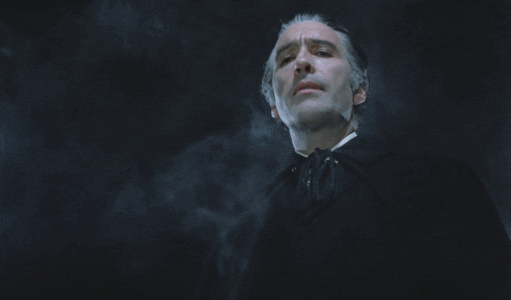
Not many people could do that. Not many Draculas could do that.
Ultimately, Lee’s Dracula is more wild animal than evil, more of a presence than a character. But short of maybe Nosferatu, I’m not sure I could name a more effectively menacing Dracula.
Nor do I think I could name a sexier one.
Obviously, this is the very specific kind of “sexy” built entirely on (many) lovingly-shot vampire-hypnosis scenes, but Hammer really went in hard on the seductive-Dracula angle. This is by no means the first time Dracula had sex appeal ‒ Bela Lugosi had a rather intense female fanbase going all the way back to when he was only doing Dracula on the stage ‒ but now men were noticing it, and academics were writing about it, and that made it official. For all Christopher Lee may protest that he wasn’t trying to become a sex symbol, that he just “did what was in the script,” he still did that really very effectively. (So did the actress who played Mina, who was famously directed to play her following scene “like the morning after the best sex of your life.”)
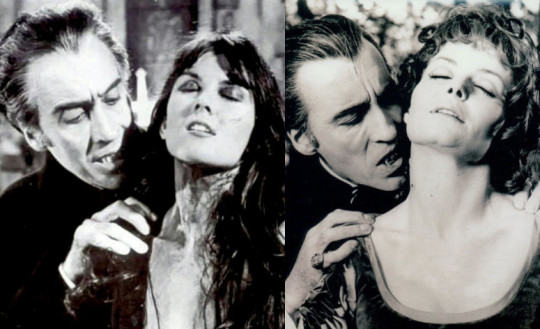
The major Dracula films of the 20th century form one heck of a sexy-Dracula trend. Before Hammer, the 1931 film couldn’t more than hint at any fangs going into any necks. After Hammer, by 1979, Dracula’s seduction of Mina had become the core of the film. By 1992, Dracula had become the hero of a romantic tragedy.
But as Dracula became increasingly more of a romantic figure in those later films, he lost something of the core of the original sexy-vampire-fantasy that had all those women swooning at Bela Lugosi ‒ of meeting something so irresistibly alluring that one, long look into its eyes could have you willingly taking off the crucifix that was meant to protect you, and baring your throat to the beast.

I don’t think any Dracula has committed to that better than Christopher Lee. Whether he meant to or not.
Mind you, being Hammer’s Dracula, you’re also going to have to put up with then being suddenly interrupted, and having to stop, panic, and leave the building in a hurry.
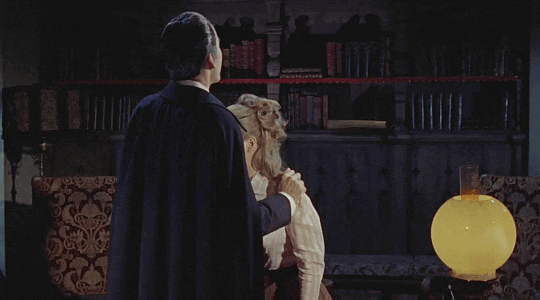
Or getting caught in the act of trying to hide down a trapdoor, then looking urgently back and forth with a panicked expression, before giving up and just chucking the nearest candlestick at Van Helsing.
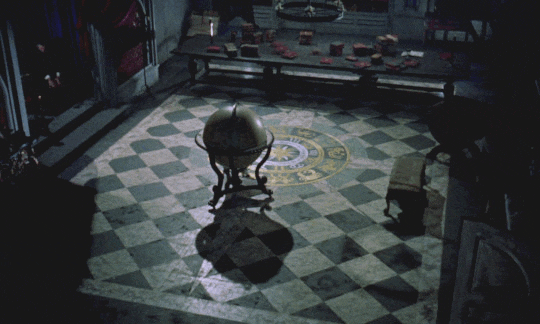
Or that great moment where he’s finally wrestled Van Helsing to the floor and leeeeans in to bite him... with this one stray lock of hair in the middle of his forehead sticking up like the start of an impromptu mohawk.
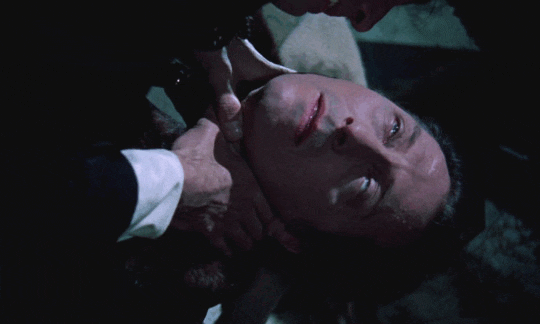
Which brings us all the way back around again to the joy of watching poor Dracula have a very bad day.
Hammer’s take on the character always had its campier side, and was that much more fun for them. Even Stoker’s original novel had its moments, where Dracula twice pauses to make a grand, self-important speech right before turning tail and fleeing. Dracula may be evil, he may be sexy, but he’s a difficult character to play completely straight. And I don’t think even Christopher Lee ever really tried. Dude had some real comedy chops I don’t think he gets enough credit for.
We’ll end this ‒ much like the films ‒ on the glorious spectacle of Christopher Lee meeting his untimely end by making the fatal error of walking into a bush.

Classic.
176 notes
·
View notes
Note
Having asked your thoughts on designing Frankenstein's daemon, might I now ask your thoughts on bringing Count Dracula from the written word into illustration? (I'm definitely in favour of the 'Hairy Old Mountain Man of Horror pretending he's people' look from the original novel; one of the small tests too many Draculas fail to pass is an absolutely tragic lack of the Evil Beard and/or Wicked Moustache explicitly described by Mr Stoker).
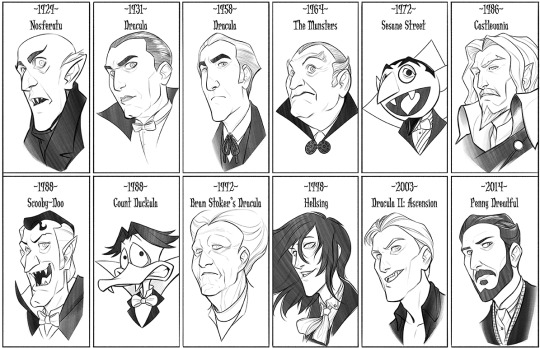
Unlike with Frankenstein, where I think the design needs to be painstakingly thought out in order to achieve the best balance of the creature's traits for horror and tragedy alike, I think with Dracula you can actually just take an approach of "whatever works". Because as I mentioned before, I think much of the appeal and longevity of Dracula is how the character's both a layered villain as well as a shapeshifting narrative force that can be tailored to whatever you want to do with. Granted, there are bad or dissappointing Dracula designs, of course there are, but in regards to the leeway you get for reinterpretation, you get a lot more of it with Dracula than with other literary icons.
Like with Frankenstein, I'm gonna bring up how I'd tackle a less grim, more comedy-centric Dracula first, one that's less a force of horror and more of a charismatic villain, and I think to that end I definitely agree that people are sleeping a lot on the hairy old man barely-passing-off-as-humanoid of the original story. Despite very much loving these performers, I'm actually not a fan of takes that mold Dracula too closely to people who've portrayed him, like Bela Lugosi and Christopher Lee, partially because I think it's a waste of an opportunity to create your own Dracula design. Since I can't draw (yet), I'll do what I usually do and make a board of images to try and convey some of my thoughts on one way I'd design Dracula.


(Pictured: Kiwi's design for Dracula, Hotel Transylvania concept art, Nandor, Castlevania Dracula, Charles Dance in Dracula Untold, Vladislav, a Transylvanian rug)
I used the images in my other Dracula post and I’ll post it here again because I absolutely adore @kiwibyrd's designs for Dracula and it's main heroes, in particular I love the way it strikes a good balance at making sure Dracula looks distinctly separate from the humans, but not too much that he couldn't conceivably operate in society as just a harmless old man. I also adore the mustache and bushy eyebrows and pointy ears and I think these three are wonderful features to keep on any Dracula design. I'm also very partial to the Hotel Transylvania concept art, even if it makes me incredibly depressed to look at all the great designs they had for Dracula that they threw in the trash because they somehow decided making him look like Adam Sandler was the idea to go with.
I deeply adore What We Do In The Shadows, both the movie and the show, and Jemaine Clement's Vladislav is one of my favorite (maybe even my actual favorite) on-screen Draculas. But I also enjoy Nandor just as much, and I think it's really great that as a character he's completely different from Vlad while also being ostensibly a take on Dracula, and in particular I bring up his Jersey look because "Dracula in common clothing" is a criminally underrated concept for a joke.
As a character, I'm very partial to comedy takes on Dracula that play him up as a decadent aristocratic supervillain, the kind that can get away with talking in third person. I also have this idea for a version of Dracula who dresses ostentatiously in finely-broidered Romanian or Transylvanian patterns, maybe even wearing a rug as a cape, claiming that he's carrying the legacy of his people on his back. And of course he's lying, he's not Vlad Tepes and he's not even Romanian, he is just a parasite pretending to have a history to be proud of, but good luck getting him to admit that. And finally, I'd like this version to be played by Charles Dance, and I consider it a tremendous crime against humanity that he has yet to play Dracula proper even despite being in a film with the character's name on the title.
So that's kinda how I would design a take on Dracula for something more comedic or more based around him as this guest character and personality on-set. Now, if we're talking a more serious version, I think the possibilities increase, and I won't be getting into all of them because I may prefer to keep them to myself, but I'll elaborate a few ideas.
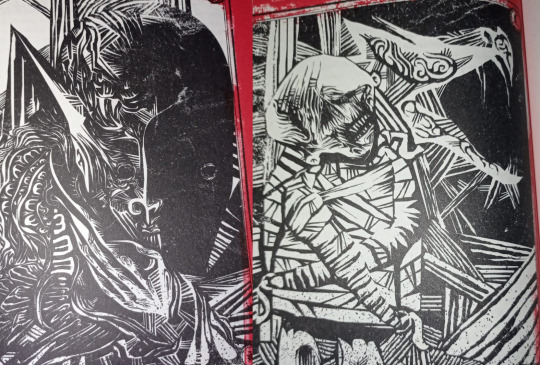
For example, the edition of Dracula I personally own comes with these really scratchy, really creepy B&W illustrations related to the story, that I can't find scanned online so I'm uploading them here so you can look at. They don't necessarily depict the scenes but rather some of the story's moments, like Van Helsing staking Lucy, Renfield in a straightjacket, Dracula as a coachman, and they are more focused on conveying the horror of the concepts at play.
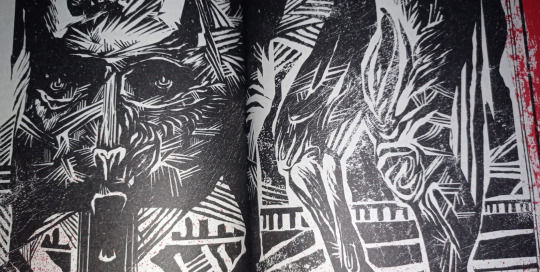
Dracula never looks the same way in any of the illustrations, in fact you kinda have to piece him out of them by trying to find teeth or capes or eyes or bat-features to see where he's hiding this time. In the first, it's the half-man half-bat, in the 2nd, he's the shrieking bat silhouette next to Renfield, and in the latter, he's the gaping jaws and eerily humanoid eyes in the wolf. The effect to me almost feels like if you were to look at a bunch of tv static and then see a humanoid shape form for a split second before everything went back to normal, something like you'd get from Slender Man or other modern creepypastas, and I’ve argued before that Dracula’s form of horror is a very modern one.

In terms of illustrations of Dracula that keep up the original traits while still pulling off horror, I definitely have to hand it to the one at the left of the image above, drawn by regourso on Deviantart (account deleted at present). Going back to Castlevania’s many takes on Dracula, two in particular that stick out to me would be Castlevania: Judgment’s armored dress Dracula, who’s got this great twisted heart/rose motif going on in his outfit, and Dracula’s final form in SOTN where he just sits in his throne and his cape twists into all these monsters, particularly how it’s depicted by witnesstheabsurd’s depiction.
I’m not particularly a fan of how Dracula’s “final form” in these games is usually just some big demon, and part of what I like about his final form in SOTN instead is that, while it’s not a particularly challenging final boss, I do find it interesting the idea of us never actually getting to see what Dracula’s true final form looks like, only an ever-shifting pitch-black torrent of teeth and claws and bloody veins pouring out because that’s ultimately what Dracula is and brings to the world.
On the flip-side of the rotten old monster, we have the charming seductor Dracula, and while I’m really not a fan of how various adaptations have convinced people that “the point” of Dracula is that he’s a seductive force and an allegory for Victorian xenophobia and I’m reeeally even less of a fan of adaptations that make Dracula some misunderstood tragic hero (and I think I’ve made rather violently clear my feelings on interpretations that play up a romance between him and Mina), that the seductive force part exists is impossible to deny, so conversely, while on one hand we can have Dracula as the gargantuan whirlwind of predatory violence, we can also go for Dracula as the tantalizing lover.

I’ve seen a lot of opinions proclaiming Frank Langella as the best Dracula because he was the best at actually being seductive while still playing Dracula, although I haven’t yet seen his performances. If I had to point at one picture I look at and do buy for a second the idea of Dracula as a romantic character, it would be that particular still of Raul Julia in the left of the above image. And it’s strange for me to think of Raul Julia as attractive because I mainly associate him with his brilliant comedy performance of M.Bison (I know it’s far from the highlight of his career but, look, I grew up with Street Fighter, I can’t help it) but those eyes are definitely looking pretty convincing to me, if nothing else.
And I’ve included this still of Sebastian Stan in the right because, during a conversation between me, @krinsbez and @jcogginsa about who could be a good fit for Dracula, jcog suggested Sebastian Stan, partially because he’s Romanian, and I’ve learned recently that Stan was actually interested in playing the character in Blumhouse’s upcoming remake. And you’d think I’d hate this idea considering how much I don’t care for tragic anti-hero Draculas, but who says that’s what he’d have to play?
Do you have any idea how much actors, who are traditionally known for heroic or supporting roles, usually LOVE it when you give them a chance to cut loose as the main villain?
I’d want Sebastian Stan to put all of his charm, all of his talent, all of his good looks and etc, into playing the absolute most vicious, bloodthirsty and irredeemable Dracula put on screen. Someone who is exceedingly, eerily good at being a lovable protagonist, who’s all smiles and charming eyes and politeness mannerisms and maybe even a funny accent, and then it isn't as funny when he's flying through your window intent on kidnapping babies to feed to his brides, except he may take a moment or two to do so because he's feeling pretty hungry himself right now.
Now, admittedly this is kind of a lot to juggle in regards to a single character, which is why my answer for questions like these inevitably has to be “depends on what I’m going for”. That being said, if I was going to try and cast someone who I think could both look the part of Dracula, as well as respectively, play “cartoon aristocrat” Dracula, “mercurial embodiment of evil” Dracula, as well as realistically be an attractive, even seductive performer who can charm viewers even as the character descends into horrible villainy, and juggle these performances even?
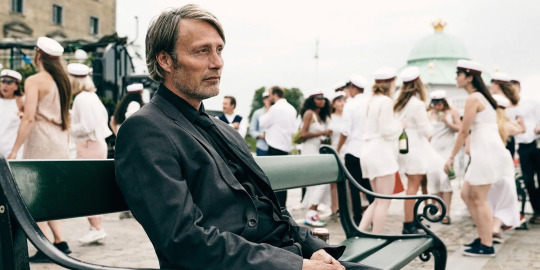
I think I’d have to go with Mads Mikkelsen. Not specifically because of Hannibal (I actually haven’t watched it yet), although it’s definitely a factor, the thing that actually made me pick him specifically is, other than his looks, his voice, his reputation for playing sinister characters, the fact that he loves the role and wants to play it, or how many people are deeply in love with this man, or that people already joke that he looks like a vampire, was watching him in Another Round, and specifically that glorious final scene where he’s just dancing to his heart’s content and just, moving with such spring in his step and such joyful vitality even though he’s past his mid-fifties, and that was the moment where, in regards to how much you all love this man, I went

And now I am going to add “casting Mads Mikkelsen as a dancing Dracula” to The List of Reasons Why I Became a Filmmaker.
#replies tag#dracula#horror tag#bram stoker#charles dance#sebastian stan#mads mikkelsen#castlevania#raul julia#wwdits#what we do in the shadows#vladislav#nandor
315 notes
·
View notes
Text

💀 SWEET TREAT 🎃
ArMor, drabble, inspired by flufftober prompt, step siblings, Modern AU, slice of life
"Do you know what day it is today, Arthur?" Morgana asked, approaching Arthur, who was nervously walking around the room with the phone in his hands, trying to get through to his father.
Her tone was seductive, she put her hands on his shoulders and squeezed them slightly, feeling the tension under his skin.
Arthur stopped.
"What day?" he blinked and looked at her uncomprehendingly, however enjoying her touch. "Don't tell me I forgot about our anniversary or something."
Morgana rolled her eyes and snorted.
"Today is Samhain, silly." She declared it as a matter of course.
Arthur shrugged and chuckled.
"It's your medieval witchcraft stuff again. And what does that mean?"
"Let's go," Morgana pulled him by the hand and put him on the sofa, and then, under his displeased exclamation, took his smartphone from his hands. "Uther can wait. So, Samhain is a special night when the border between the worlds is thin and all the dark and light forces are released free..." She moved closer to him, playing with his blond hair and shirt collar.
"I know what Halloween is, thank you, Morgana. What exactly do you want from me? You only treat me so sweetly when you want something from me," he bent down to kiss her, but Morgana dodged with a smirk, putting her fingers on his lips.
It was true, Morgana often used the effect she had on Arthur to push him on the right path...But in fact she loved him more than he guessed or she wanted to show.
"You can't feel the magic in the air at all, Arthur. But I do want," she took her hand away, "To have a costume party tonight. I've already rented costumes for us. Text to Merlin, Gwen and Lance."
"Seriously? Have you already ordered costumes without telling me?" Arthur was surprised, but did not object to the idea of having fan on Halloween eve. Morgana's love of cosplay amused him. "And who are you going to dress me up in this time?" He remembered how he was the most pathetic Dracula on earth, and she was his innocent victim. He is still embarrassed to look at these photos on her instagram although they have got many likes.
Morgana's eyes twinkled.
"Oh, the theme of the evening will be King Arthur's Court. And you will be him."
Arthur winced slightly.
"The King Arthur? It's banal choice, Morgana, plus I don't like all this duty and destiny stuff. I'm not thrilled with the idea."
Morgana chuckled.
"Your father wouldn't really like these words about duty if he heard them."
"Okay, okay, and who will you be?" asked Arthur, putting his arm around her waist and relaxing, "Queen Guinevere, I hope?"
"Of course not, I'll be the Witch Morgana, your evil sister who loved you so much..." Morgana pulled him closer to her and kissed him.
"Hmm, the plot like this..." Arthur muttered, blushing and tearing himself away from her. "And besides, didn't Lady Morgana want to kill King Arthur?"
"The one does not hinder the other, does it?. I know you'll like it," Morgana winked at him and put his phone in his hands again. "Settle everything with Uther and Mom, tell we are not coming out with them tonight, just come up with something."
She got up, intending to go to her room and order food and drinks for the evening from her favorite restaurant. "And text to Merlin, Gwen, and Lance," she repeated as she left the living room.
"I obey, my lady," Arthur replied, grinning after her. How could he refuse her anything?
7 notes
·
View notes
Text
Dracula Spoilers Ahead
I am glad people are reading Dracula because maybe finally people will realise how badly the adaptations treat the women in this story. Not that the book is amazing on that front, it is Victorian, but...
Book!Lucy: in love with three men who are all good friends with each other, sincerely wants them all to be happy and doesn’t like the idea of choosing between them, would be much happier if she knew being poly was a thing, is not really portrayed as a bad person for this at all pre-becoming-a-vampire. In fact she’s generally depicted as sweet, kind and innocent. Is not in love with/attracted to Dracula (she was attacked while sleepwalking, not “seduced”--in fact, no woman in this book is attracted to Dracula, everything Dracula does to women is nonconsensual...normally I love hot vampires and hero/villain relationships can be a lot of fun but I really dislike that many adaptations portray one or both of the women as in love with Dracula when he’s portrayed as much more predatory in the book, nothing Dracula does to Lucy or Mina is any kind of romance). Yes, she acts more seductive than she usually would when she becomes a vampire and this is treated as a sign that she’s evil now, which isn’t great (though she mostly just acts seductive towards her fiance when she’s trying to bite him and turn him into a vampire, she’s not nearly AS sexual as some adaptations make her even as a vampire), but the “the men only killed her because they were scared of a woman acting seductive, she never did anything actually evil” interpretation...doesn’t really hold water when she was drinking children’s blood.
Lucy in many adaptations: evil slut! slutty evil horrible woman! she deserved to die because she was stupid enough to fall for Dracula!
Book!Mina: practical, intelligent, competent. Not an amazing feminist icon by modern standards and not a physical fighter but far from weak in terms of personality and generally a pretty decent female character for the era the book was from. Also not in love with/seduced by Dracula, she always wants him killed both before and after he bites her (the biting is depicted as a traumatic assault, and the men reassure her that it doesn’t make her evil/bad/corrupted). In a genuinely healthy loving relationship with Jonathan. Arguably a partial inversion of “only the sweet innocent virgin girl survives” since Lucy’s innocence and sweetness is emphasised more heavily and she dies, while Mina...OK, again, she’s a Victorian character, clearly by modern standards the book’s attitude to sex is not progressive, but...she is married so it’s far more likely that she’s had sex than that Lucy has, even though it’s not really mentioned. The men’s initial attempts to protect her by not telling her anything have terrible consequences and once she does get involved she’s one of the more intelligent and capable people on the team. (Also she could be interpreted as bi, though this wasn’t necessarily intentional: she's very close with Lucy and there’s something along the lines of her first noticing Dracula because they were both admiring the same woman.)
Mina in many adaptations: constantly panicked screaming damsel in distress who doesn’t ever really take any action that advances the plot and isn’t competent at anything.
18 notes
·
View notes
Text
Daniel LaRusso: A Queer Feminine Fairytale Analysis Part Two of Three
Part 1
Part 3
6. Sexual Awakenings part 1: Love, Obsession, & Size Differences
[Insert that post talking about the creators making sure that Daniel’s antagonists were much bigger than him so that the audience would sympathise, spawning 10000 size kink fics]
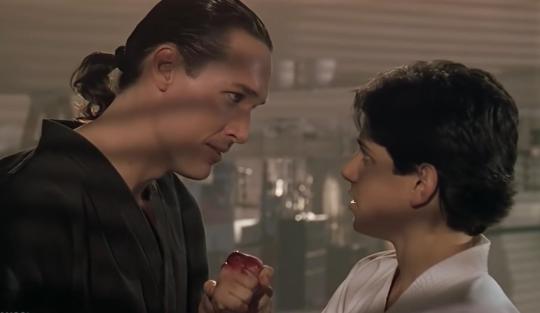
I’m sure this won’t awaken anything in Daniel
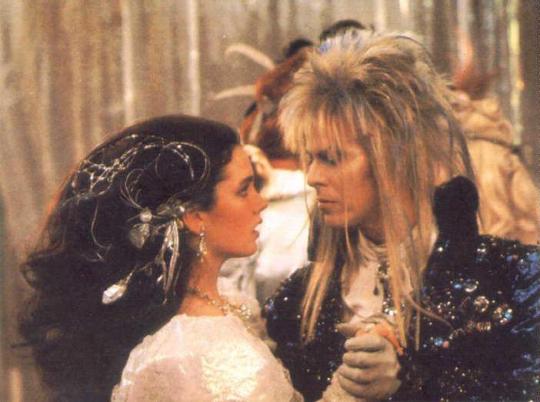
Corporate wants you to find the difference between these two pictures
The hallmark of feminine fairytales tends to be growing into womanhood, with all those symbolic sexual under/overtones, searching for a prince, encountering monsters (or evil stepmothers), on the surface tending to be quite passive/reactive, but actually being about young girls and women getting out of their environment and choosing to tussle with those deep, dark desires – monsters. They’ve got to function within the limitations of power that they have – escaping an abusive situation through marriage, chasing forbidden desires under the guise of duress, asking questions about sexuality through things like symbolic plucking (flowers) or consumption (fruit) or pricking (needles), etc.
Daniel isn’t striking out to find his fortune or win a girl or a kingdom Like A Man, he’s not a threat to Silver, who – like Jareth in Labyrinth – is in control for almost the whole of the narrative, he’s not actually able to do much more than react until he makes the decision to stop training, and even then he’s immediately ganged up on and assaulted, needing to be saved by Miyagi while he stands and watches, bloodied and bruised.
Daniel’s journey in the third movie is to be forced into an impossible situation, seduced by Silver, and then prove that whatever violence Silver did to him isn’t enough to destroy him. It is incredibly similar to Sarah’s in Labyrinth, who by the end declares: “you have no power over me,” and that’s her winning moment. Not strength, not wits, not a direct fight, (although Daniel does fight Barnes and gets beat up again – only winning in in the end by taking him by surprise, unlike in TKK1 or TKK2 where you could argue that he proves himself to be a capable physical opponent to Johnny and Chozen), but by declaring that whatever power was held over her is now void.
Daniel’s narrative isn’t satisfying in the same way, because the dynamic of Silver and Daniel only accidentally emulates this - it’s not an intention on the side of the film-makers.
When Miyagi tells Daniel that he has strong roots, when he tells him not to lose to fear and Daniel wins over Barnes (in an almost fairytale-esque set of events), on paper he’s defeated whatever hold Terry Silver has over him. In the film itself though, Daniel never defeats Silver (which will likely be confirmed once he returns in Season Four). Daniel cannot simply say “you have no power over me,” and see Silver shattered into glass shards.
The film is a contradiction: It wants to be a masculine sports film, but it exists in the same realm as Goblin Kings seducing young girls with the promise of: “Just fear me, love me, do as I say, and I will be your slave.” Unlike Sarah, Daniel doesn’t claim the power that’s been promised to him on his own terms. His subtextually sexual awakening is so corrupted that all he can do is pretend it never happened.
Still, Daniel proves in the film that his strength is not in his fists. It’s in his praying to the bonsai tree that’s healed despite a violent boy brutally tearing it in two.

These looks on Daniel and Silver though?
So why does Silver become obsessed with him? What’s up with all those red outfits (that he doesn’t wear in Cobra Kai)? What does the temptation reveal about Daniel? How does it recontextualise TKK1 and TKK2? Is Daniel bisexual? (yes).
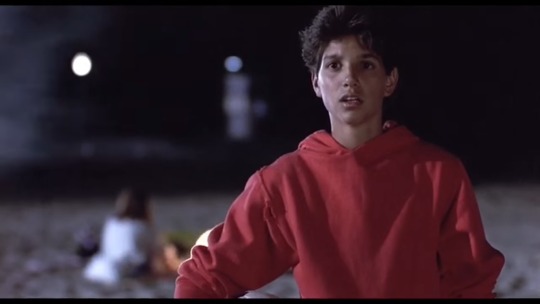
Ah, beach-Daniel, in your red hoodie and your cut-off jorts. Iconic hot-girl summer vibes.

If you didn’t want me over-analysing this, you shouldn’t have put him in so many red outfits and then have this man leering at him like he wants to eat him alive.
Surface-level it’s not hard to read into a Dude Story: Masculine power fantasies are about strength in a very direct way. Fighting, control, suaveness – and if you’re not the most traditionally masculine of guys, asserting dominance through being a good lover or intelligent or overcoming that unmanliness in some way through beating the bully or convincing the hot girl to go out with you, levelling up in coolness. Being A Man. It’s not too dissimilar from Daniel’s arc in the first movie, if you watch it without taking later events into account, although Daniel is never interested in proving himself as a man, and more in making Miyagi proud. Still, he does win and gain respect, and arguably “get the girl,” although Ali’s interest in him was never dependent on the fight.
7. Sexual Awakenings Part 2: Sexual Assault, Liberation, and Queerness
Feminine power fantasies are often about sex. Metaphorically. More accurately it’s “owning sexuality.” Even more accurately: “Freedom.” They also inhabit a fluid space in which empowerment through monstrous desires and non-consent can happen at the same time. And on top of that, many of these “fantasies” are actually being written by men, so whose fantasy is it really? A lot of them are based in oral traditions so presumably they were originally from the mouths of women, even if modern iterations (starting with Grimm’s collections) are filtered through cis men’s perspectives.
All of that being acknowledged: In Angela Carter’s “The Company Of Wolves,” Red Riding Hood unambiguously sleeps with the wolf. Belle discovers her freedom from expectations and unsuitable suitors (and in some versions, evil stepsisters) by falling in love with a Beast (the original novel was written by a woman, the 18th century Gabrielle-Suzanne Barbot de Villeneuve). Jareth informs Sarah of his obsessive devotion to her in Labyrinth. To lean into horror for a moment – Buffy is stalked and eventually has relationships with both Angel and Spike, Lucy in Coppola’s Dracula (which I have mixed feelings about) is raped by the werewolf and Mina is stalked by Dracula, The Creature Of The Black Lagoon kidnaps Kay (the lead’s girlfriend) – subverted in both The Shape Of Water in which Eliza forms a consensual relationship with the amphibious sea-god and in the short-lived horror series Swamp Thing, in which the connection is purposefully framed as seductive…
and in The Karate Kid Part Three Daniel LaRusso punches a board until his hands bleed because an attractive, older man tells him to and in this moment he gives in to what he (thinks he) wants.
Not all of those examples are equal. Some are consensual, some are hinted as abusive and/or stalkery, all of them have large age gaps, and a few are outright non-consensual.
But they’re all fantasies.
They’re all power-fantasies.
Except for Daniel, because he’s a man and the idea that being obsessed (lusted) over by an older man who keeps you in his thrall, specifically because you tickle his fancy for whatever reason, because you’re beautiful, breakable, different – could in any way be considered empowering is a difficult concept to wrap your head around. It doesn’t contain that “but I’m a good girl, I’d never go off the path and pluck flowers if a bad wolf told me to, honest,” societal context or the social context of rape culture. It’s closest comparison is closeted (perhaps even unknown until that point) queer identity.
There have recently been some comparisons of Daniel LaRusso to Bruce Bechdel in Funhome (and everyone who says that Ralph Macchio ought to play him in the upcoming movie: you’re right and I’m just not going to enjoy it as much without him). I’ve written a post about Sam being the heir to his legacy and trauma, specifically as a queercoded man. It’s not dissimilar to the plot of Funhome in a lot of ways.
The other interesting source that’s been going around in connection with Daniel is the essay “The Rape of James Bond,” which discusses the use of sexual assault as a plot device for women and not for men: “About one in every 33 men [in the US] is raped. … [your statistically average, real life man] … doesn’t have a horde of enemies explicitly dedicated to destroying him. He doesn’t routinely get abducted, and tied up. Facing a megalomaniac psychopath gloating over causing him pain […] is not the average man’s average day at the office.” That last bit is just a descriptor of Terry Silver, (although I take issue at the blasé use of psychopath).
The two part youtube essay Sexual Assault of Men Played for Laughs posits that there is nothing more de-masculinising than the threat of sexual assault and therefore any narrative that features this “rightfully” must mock any man who has been a victim or who fears being a victim of sexual assault. It is feminising. There is nothing more humiliating – and therefore unheroic – than a man dealing with sexual assault.
So what do we feel when we see an attractive young man being put into a vulnerable position by an older man? A trope associated with female characters, a trope that is considered unpalatable for men (see reactions that happened when the hint of sexual assault was introduced in Skyfall).

Was it the fact that he was being threatened, or the fact that James’ next line is: “what makes you think this is my first time?”
Some thoughts added by @mimsyaf are around the idea of safety in how a lot of cis women might relate to this narrative through Daniel’s eyes. He’s not a woman, he has – societally – more power than a girl or woman would have, which makes this a different watch to, say, if Danielle were to go through the same narrative. Daniel doesn’t carry that baggage of rape culture, or of the male gaze that you might find in a similar scenario of Buffy the Vampire Slayer or Christine in Phantom of the Opera (and once more the age differences between these characters and the men who love/lust over them are substantial), which makes the narrative “safer” to engage with.
I agree with that, although as a transmasc person I also come at it differently. I specifically like to headcanon Daniel as a trans guy and find his fraught interactions with masculinity through his own non-toxic lens relatable, as well as the way other boys and men react to it – also I think Terry Silver is hot. I know there are people who write Terry Silver with female OCs, which is also a form of empowerment.
On the flipside putting Daniel in this space runs a risk of fetishising him as a queer youth who is either Innocent and Pure, or a bisexual stereotype that deserves to be assaulted for not being a real man. After all, Real Straight Men don’t run the risk of sexual assault.
Alas, the road to empowerment never did run smooth.
The comparisons between the way Daniel is treated by the text and how female characters are often treated in texts are undoubtedly there. Through Ralph Macchio and TIG’s casting and the direction and acting, but also within the text itself.
It might not be with the same purpose as Neo’s symbolically trans journey, but it puts the whole narrative that Daniel’s going through from TKK1 under a different light than if there had only been one movie that ended on a triumphant sports win and a girlfriend.
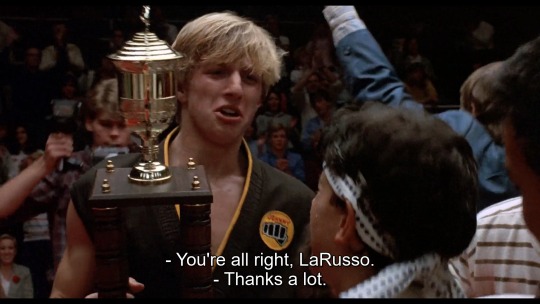
Johnny’s masculinity and the use of tears as liberation, now that’s a whole other analysis….
#daniel larusso#terry silver#the karate kid part three#the karate kid#cobra kai#ck#cobra kai meta#part two of three#we're going into labyrinth and james bond in this one fellas#(non-gendered fellas)
109 notes
·
View notes
Note
I'm trying to put 18-19th century literary vampires into categories, like tragic/tormented, romantic, vengeful, mindless/zombies, seductive, cunning, pure evil/sadistic, obsessive. And sorted into gender and places of origin (mainly German, French, English (incl Irish writers)) to see if there is a pattern for each. Might not find any, but I do want to categorize each vampire regardless.
Might even do one for their lovers and/or targets, too, some are benevolent, some malicious and punished, some terrified and unwilling, some ignorant but willing, one is Jonathan Harker (terrified and unwilling and then fully knowing and willing)
Do you think such a task would be interesting? From the vampires you do know about, have you noticed things like if the tragic/tormented ones outweigh the pure evil ones and so on?
It sounds interesting and handy for the classic vampire lovers out here!
In my experience, the most sympathetic tragic bloodsuckers in that era amount to those in Dracula (Mina and Jonathan as nearly-turned, Lucy and the Dracula crew as euthanized), "Clarimonde" (herself), Carmilla (also herself, though mileage can vary depending on how earnest you think her feelings for Laura really were), and every example in, "The Family of the Vourdalak" (due to the premise that vourdalak vampires are forced to prey exclusively on loved ones). But more often than not, vampire lit of the period had them being evil. And very often being a hot undead lady going after an aghast young man.
Though there are obvious exceptions--the original seductive male vamp and serial killer, Lord Ruthven, of "The Vampyre," and more wicked matronly figures like "Good Lady Ducayne" and "Mrs. Amworth,"--I've run across a surplus of examples where the setup amounts to 'Hot Evil Vampire Babe Seeks Stalwart Youth to Prey On.' Because while the phenomenon hadn't exploded as it would in 20th and 21st century vampire stories, using the undead as desire-based pressure release valves in literature was a good cover for scratching certain non-Victorian-principles-approved itches. As long as the vampire = evil, the vampire could also = seductive. Basically the narrative shorthand for 'oh no I sure hope this powerful bloodsucking dom demon doesn't put me in a trance to drink and/or fuck me into also being an immortal evil sexy bloodsucker ha ha' <- said every guy* behind the typewriter.
*With the exception of "Good Lady Ducayne," written by Mary Elizabeth Braddon, you'll notice all of the aforementioned stories are written by men. You will also notice that "Good Lady Ducayne" is also the only story in which the vampire figure is an old crone and not a voluptuous tempter archetype. I'm sure this means nothing.
#every other vampire lit writer pre-1900s: 'I sure hope no vampire comes out of the mist and bite-fucks me' 👀#dracula#clarimonde#carmilla#the vampyre#the family of the vourdalak#good lady ducayne#mrs. amworth#vampire#literature
15 notes
·
View notes
Note
.... Omg! Can you please give us analysis of each character and how they are portrayed in the book and then the movies?
Oohh ok! (I’m just gonna go thru the characters and how they are in the book vs how they are usually portrayed in adaptations. These things do not apply to every single adaptation, or even necessarily one specific adaptation, full disclosure, lol) (also this will be very long, so, it’s under the cut.)
Mina:
~ In the book: kind, sweet, caring, motivated, intelligent, interesting, funny. I could go on and on. The protagonist. She IS the moment. She could defeat Dracula without the men but the men could not defeat Dracula without her. I said what I said.
~ In adaptations: typically kind, but may or may not be any more intelligent than the men. Typically portrayed as a damsel in distress, though in the book she isn’t. Almost always Dracula’s love interest. Sometimes she even low-key betrays the Crew to help him. Her personality is very often reduced to one or two traits/archetypes so she can better fit the role of Dracula’s love interest.
Jonathan:
~ In the book: Damsel in distress. He can sometimes come across as boring, because he’s the only very average person in the book, but that’s because he’s supposed to be. It’s a compare and contrast type of thing. Even then, he’s incredibly brave, and incredibly determined. He represents the average person, rising up to the challenge.
~ In adaptations: oh, Jonathan?? You mean the only reason why Mina and Dracula can’t bone??? Yeah but it’s fine if Mina cheats a little bc also he’s an asshole for no reason :////
Lucy:
~ In the book: A delight. Absolute angel. Everyone loves her and she loves everyone but not always in the way they want. If she could she would move all of her friends into a little cottage and bake bread and make tea for them for the rest of forever. Part of the reason why her transformation into the Bloofer Lady is so scarring is because she was genuinely so good-hearted before that.
~ In adaptations: lol she has three suitors so she must be suuuuper promiscuous (side note: not a bad thing but most adaptations portray it as such), and also because of that she definitely wanted Dracula to turn her into a vampire.
Arthur:
~ In the book: Lucy’s fiancée. Also he’s fuckin loaded so he helps fund the whole expedition. Interpretations of him change kinda drastically because he’s not given much canon personality or back story, but he’s overall a pretty decent guy. He can be mean but, like, in a loving way.
~ In adaptations: if he’s there at all he’s usually Just Some Guy. Which, like. fair.
Jack:
~ In the book: a psychiatrist who desperately needs to see a psychiatrist but he is not self aware enough to know this. Used to be Van Helsing’s student. He definitely can be an ass (especially to Renfield), but it’s usually more that he just doesn’t think how his actions affect other people all the way through than him actively being a terrible person on purpose, if that makes sense. Him and his interest in science and technology symbolize the heralding of the new age, which is in contrast with Dracula, who is only ever “living” in the past (bedum tsss).
~ In adaptations: sometimes he’s Van Helsing’s peer rather than ex-student. Usually he doesn’t still keep a phonograph, or even an active interest in technology, which is...a disservice. He can either be nice, or mean, usually not very nuanced or interesting. Honestly I feel like usually in adaptations he’s kinda just used as the gap to get Van Helsing there and then he does nothing after that.
Quincey:
~ In the book: literally the guy who kills Dracula. A Texan, as well, which seems funny now but at the time it was a fairly common trope to add in a foreigner. He’s pretty calm always, especially in a crisis, and also willing to step up and do whatever’s needed of him. And, again, he literally kills Dracula. Easily one of the more important characters in the book, except he doesn’t keep a diary so most people don’t acknowledge this. Also at one point it’s stated he’s rich af iirc so that’s funny.
~ In adaptations: what do you mean we should add the guy who killed Dracula??? Nah it’ll be fine without him
Van Helsing:
~ In the book: he’s the hero of the story (not the protagonist, that’s separate). Him and Dracula are character foils. He’s the guy who knows everything about vampires, and also the guy who specifically knows how to stop Dracula. Even then, he isn’t a professional vampire hunter, or even, like, an expert. He just happens to know a shit ton about this. His name means “father of multitudes” and he is the Designated Dad of the group. He probably makes everyone hot cocoa and tells them weird stories about spiders drinking oil from lamps after a long day.
~ In adaptations: murder grandpa is an asshole who also has no idea what he’s talking about because it makes Dracula look better
Count Dracula:
~ In the book: the villain. He could represent a lot of things — anything from a plague, to the past creeping up and not staying buried where it should, to Stoker’s internalized homophobia, to Stoker’s own xenophobia or antisemitism, or all of the above, or none. He has a lot of layers and each layer is a new level of villainy. We don’t know a lot about him, admittedly — who he was in life, why he became a vampire, what all of his powers are, or even his motivations for coming to London. He can represent any evil we want at all, which makes him a very affective villain. Also he’s supposedly related to Atilla the Hun which is funny af to me for no reason
~ In adaptations: incel!Vlad III
Renfield:
~ In the book: admittedly, he does not have much baring on the plot. He tends to act as a meter for how close Dracula is at any given moment, until his death when Mina takes over that role. However, he introduces many themes and topics into the story: insanity, corruption, idealization of evil, etc., and he and Lucy work together to showcase how vampirism corrupts and how it can destroy even relatively innocent people. Even though Renfield has a bit of a reputation of being violent and volatile, he only ever really does something violent once, which wasn’t even entirely of his own volition and he sacrifices himself for the greater good.
~ In adaptations: oh no scary evil insane man1!!11! he’s obviously just horrible it’s not like Dracula is manipulating him!11!! if Dracula were to manipulate him then Dracula wouldn’t be a sympathetic antihero :(((
The Three Weird Sisters:
~ In the book: the antithesis to Lucy’s suitors. They are supposed to be seductive, and dangerous, above all. They might be Dracula’s victims, or they could be some other vampires unrelated, we don’t really know. Not much is said about them and that’s likely very much on purpose. They have the same air of mystery about them as Dracula does, if not more. A lot of the horror in this book is based in the fear of the unknown.
~ In adaptations: walking boobs with fangs. Usually so much is changed about the story that none of the above is even relevant or can be applied to them.
Anyways thanks for the ask and I hope this answers your question :)
34 notes
·
View notes
Text
Count-Down: Number 13
Welcome to 31 Nights in Dracula’s Castle! All throughout the month of October, I’m counting down my Top 31 favorite portrayals and reimaginings of the King of the Vampires, Count Dracula! Today, I implore you: A Penny for your Frights. Number 13 is…Christian Camargo.

“Penny Dreadful” was a three-season show that really should have run for a fourth, but I was happy with what I got. I wasn’t quite sure what to think of the series when I first got into it, but I was definitely curious. The show is sort of a modernized tribute to the old “Monster Mash” movies of the 1940s and 50s – again, much in the vein of Van Helsing. This show does a much, MUCH better turn there than Van Helsing, however, with more psychological depth and real chills to go with its thrills. It took the Victorian Gothic tropes in an interesting direction, and created some of the best new takes on these popular figures, along with having a strong cast of original characters all its own. Its take on Dracula is no exception. Dracula is teased from basically the start of the first season: the driving force that gets the plot of “Penny Dreadful” started is when Mina Murray (not Harker; Jonathan is never present, as far as I can remember) is kidnapped by a vampire. Her father, Sir Malcolm Murray, manages to get a band of people together to hunt the monsters and try to save Mina. It later turns out Mina’s kidnapper isn’t Dracula himself, but IS working FOR Dracula, as part of an elaborate scheme. As the show progresses, it is ultimately revealed that Dracula is the literal brother of Lucifer himself, and both of them are having a bit of a sibling rivalry. That rivalry is over…what else? A lovely lady. The main character of the show is one Vanessa Ives, and she is the lady in question. We find out that Vanessa is, according to an Ancient Egyptian Prophecy (which I presume is meant to be a reference to The Mummy) the “Mother of Evil.” If either Dracula or Lucifer are able to turn Vanessa and get her to be their wife, she will allow them to conquer the world. We never TRULY meet Lucifer face to face (I can only assume that would have happened in the fourth season, had it ever been), but after two seasons of teasing his presence, Dracula arrives in a wonderful way as the main antagonist of the third and final season. The Count is played by Christian Camargo, who I know primarily for playing one of the main serial killers in the series ��Dexter,” namely the Ice Truck Killer. (I’m not sure if that makes this role typecasting or not, but it’s probably telling of something.) Dracula is first introduced as a zoologist named Dr. Alexander Sweet, who is just as charming and friendly as his name implies…but I don’t consider giving that away to be spoilers, because the show almost immediately reveals that Dr. Sweet is Count Dracula, so it’s not exactly a big twist. As Dr. Sweet, Dracula tries to seduce and gain the trust of Vanessa, so she will marry him, and thus allow him to take over the world. What I really love about this take on the character is a combination of two elements. One is the ambiguous nature of his relationship with Vanessa. Of course he’s after her because of power, that cannot be denied…but in his final seduction, he claims to have actually and legitimately fallen in love with her. And what’s interesting is, it’s genuinely hard to tell if he is lying or not. Even if he is lying, he’s pretty convincing in that scene, and he seems legitimately crestfallen when he’s ultimately defeated and Vanessa is taken from him. What’s really interesting is that his disguise as Dr. Sweet is a really great contrast to his normal personality, but it still comes from his black heart. Everything Dracula claims to be are things Dr. Sweet was, and it’s hard to say any of it is completely untrue…it’s just a different way of playing things off. Whether you see it as a sign of masterful manipulation, or true character development, it’s still really great. This leads into the other thing I love about this Dracula: how surprisingly subtle he is. Penny Dreadful is, as its name might imply, not the most subtle of shows; the acting itself is rarely too over-the-top, but the show ITSELF is, if that makes sense. So I fully expected a Dracula who would be theatrical, grandiose, and exuding raw power in a sort of classical style. That is NOT what we get: Camargo understates the character, but in a very powerful way. He carries himself differently as Dracula, striding straight and tall, with a coolness and calmness to his movements that exudes confidence and power. His voice rarely lifts an octave as the Count, yet you never once doubt he is in total command in every scene he has. He is cold and careless, speaking almost dismissively about even the most dreadful things, occasionally with a sense of amusement; as if watching all these little mortals go about their business is utterly adorable to him. In a way, he reminds me of Disney’s Shere Khan, of all characters: you always feel the animal underneath, but at the same time, you’re shocked when it comes out: as Dr. Sweet, he’s so quirky and…well…sweet, you almost forget he’s Count Dracula. And as Count Dracula, he’s so thoroughly composed and controlling that you forget he can literally hurl you across a room and through a brick wall with almost no effort at all. The result is a layered and unsettlingly collected take on the classic character that definitely deserves high praise, and met all expectations while also going against them. Tomorrow, the countdown continues! Hint: Don’t judge a book by its cover.
#count-down#top 31 draculas#dracula#count dracula#dr. sweet#penny dreadful#christian camargo#alexander#alexander sweet#sweet#number 13#halloween advent calendar#october special
17 notes
·
View notes